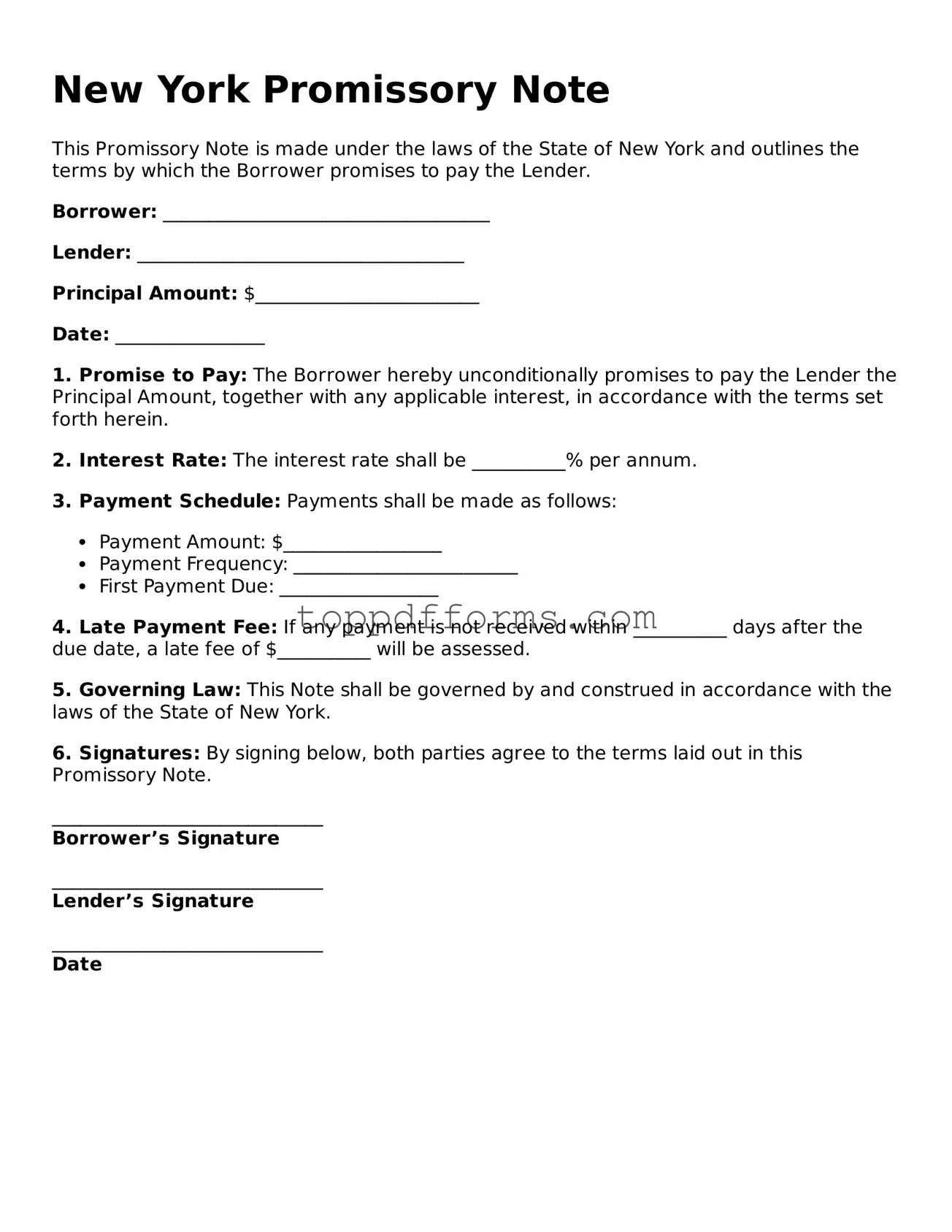What is a New York Promissory Note?
A New York Promissory Note is a written agreement in which one party promises to pay a specific amount of money to another party at a predetermined time or on demand. This document serves as a legal record of the debt and outlines the terms of repayment, including interest rates and payment schedules.
Who typically uses a Promissory Note?
Individuals and businesses often use Promissory Notes. They are common in personal loans, business financing, and real estate transactions. Whether lending money to a friend or securing a loan for a business venture, a Promissory Note provides clarity and protection for both the lender and borrower.
What are the key components of a New York Promissory Note?
A typical Promissory Note includes the following components: the names and addresses of the parties involved, the principal amount borrowed, the interest rate, the repayment schedule, and any late fees or penalties. It may also specify whether the note is secured or unsecured, meaning whether collateral is involved.
Is a Promissory Note legally binding?
Yes, a properly executed Promissory Note is legally binding. Both parties must agree to the terms and sign the document. If one party fails to fulfill their obligations, the other party can take legal action to enforce the terms of the note.
Do I need a lawyer to create a Promissory Note?
While it is not required to have a lawyer draft a Promissory Note, consulting with one can be beneficial. A lawyer can ensure that the document meets all legal requirements and adequately protects your interests. However, many templates are available online for those who prefer to create one independently.
Can a Promissory Note be modified?
Yes, a Promissory Note can be modified if both parties agree to the changes. It’s essential to document any modifications in writing and have both parties sign the amended note. This helps avoid misunderstandings and ensures that the new terms are enforceable.
What happens if the borrower defaults on the Promissory Note?
If the borrower defaults, meaning they fail to make payments as agreed, the lender has several options. They can pursue legal action to recover the owed amount, which may involve going to court. Additionally, if the note is secured, the lender may have the right to seize the collateral. It’s crucial to understand the terms outlined in the note regarding default and remedies.
